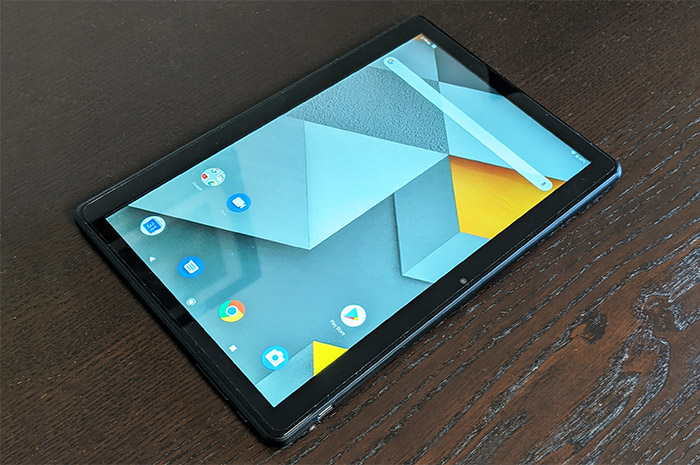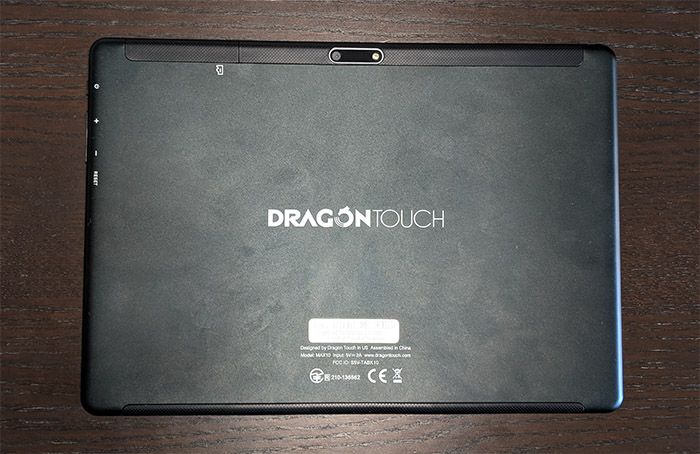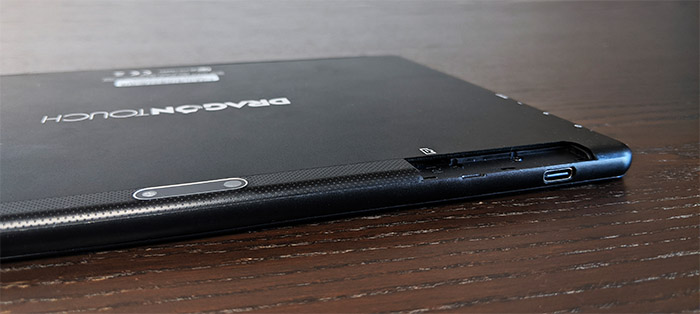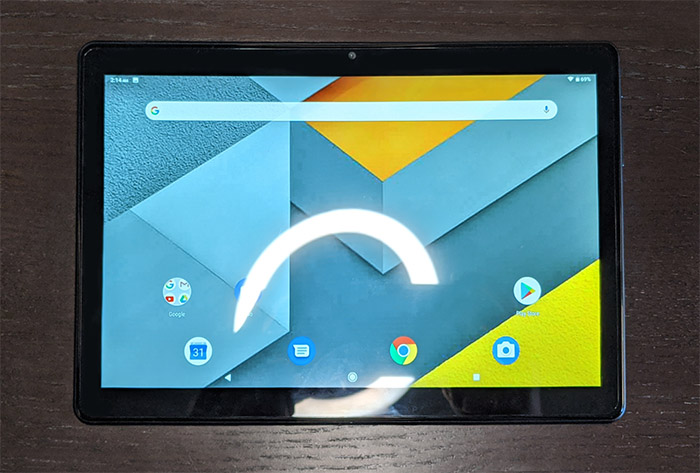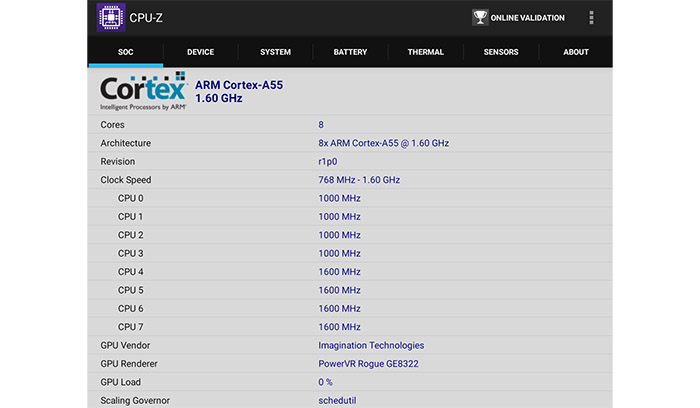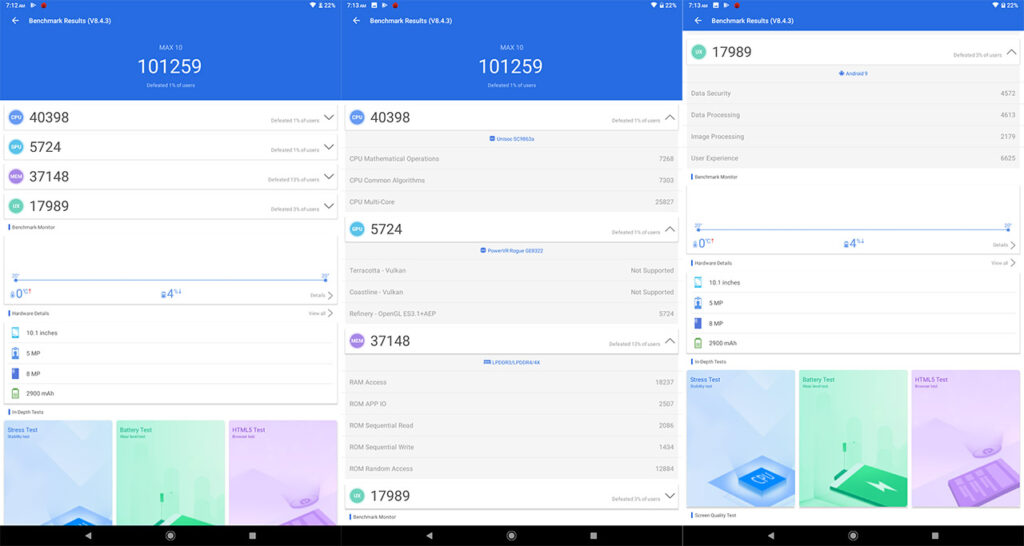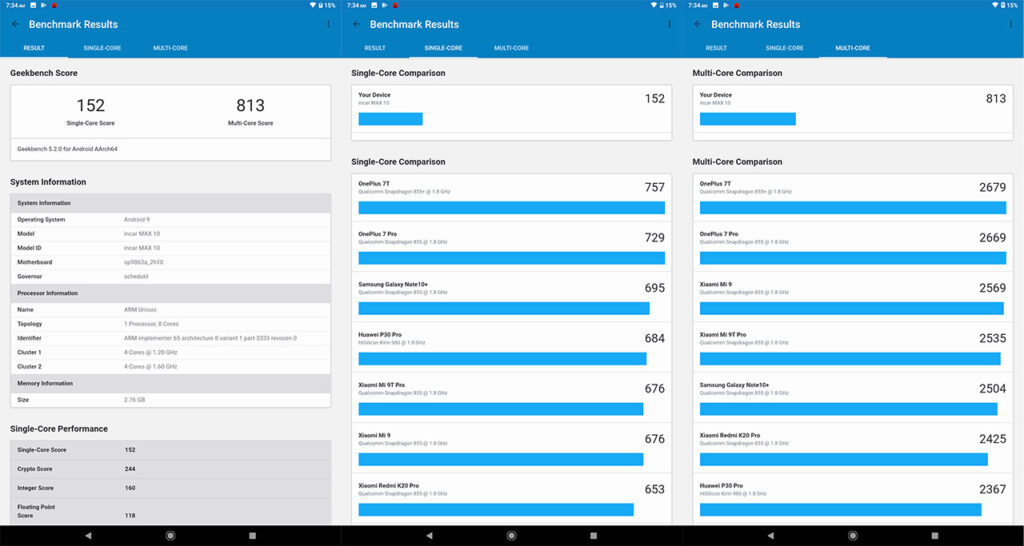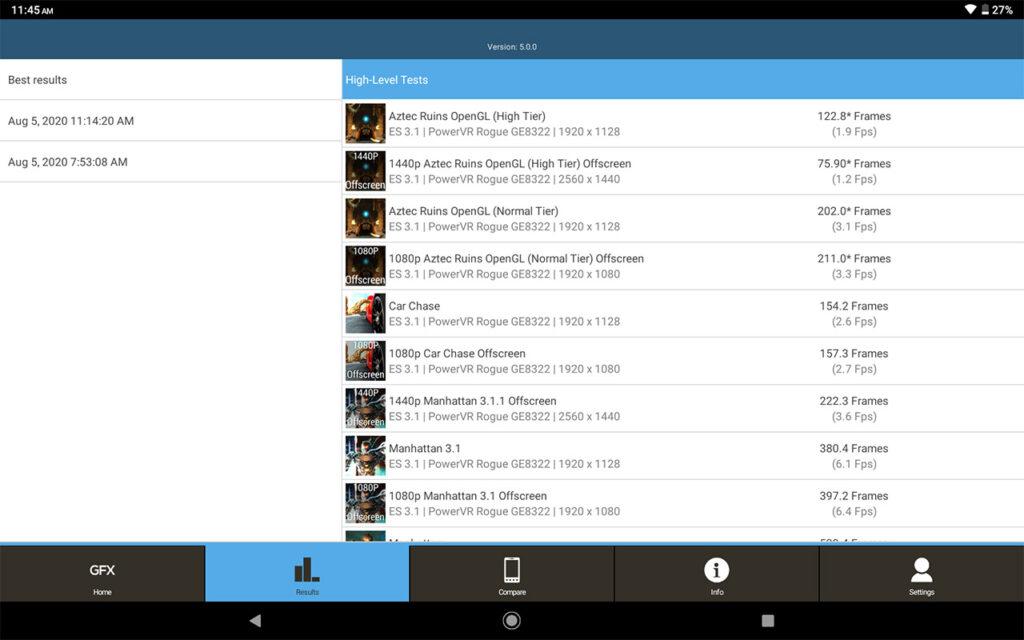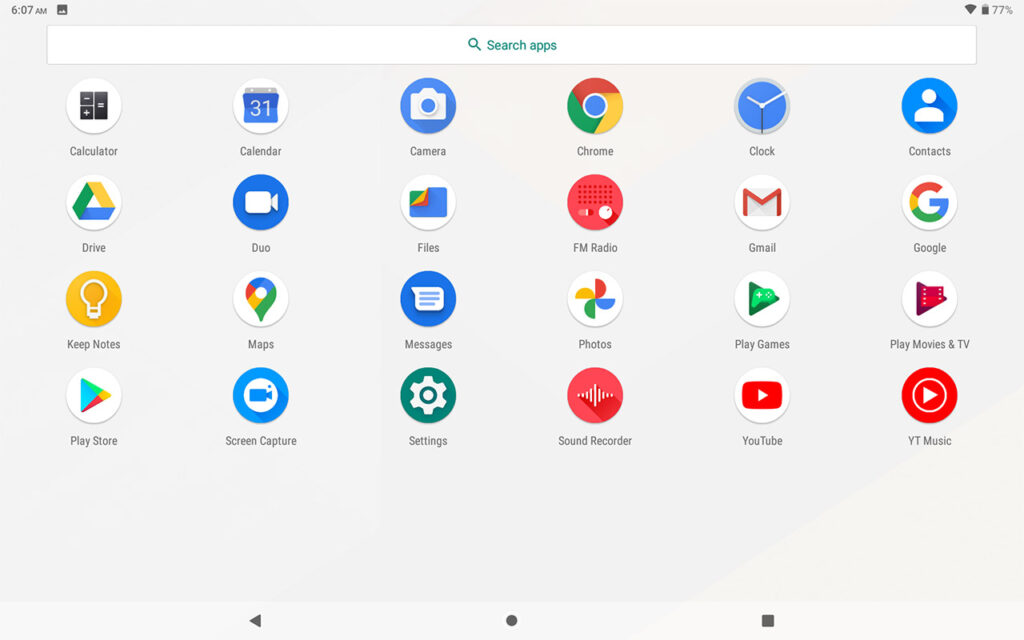Dragon Touch has been developing affordable tablets for almost a decade and its latest flagship model is the Max10 which is built to take on the Fire HD series and considering that the manufacturer clearly has some understanding of its audience, the tablet can definitely become a better option than the newest HD 8 Plus. And with 3GB of RAM, a full HD 10.1 IPS inch display, a 5000mAh battery and the fairly potent mid-range ARM Cortex-A55 CPU, it’s hard not to give it a second glance.
It’s also true that the tablet market has seen far better days and because the ultrabooks have gotten so thin, light and powerful, and the display of the smartphones went above 6-inch, it gets a bit hard to justify purchasing a tablet in 2020.
It will still remain desirable for media consumption due to the larger screen (while you’re on a plane or a long train ride) and the Dragon Touch Max10 does seem to shine in this department, sporting a dual-speaker system, dual band WiFi connectivity and the internal hardware should be enough for most games, even the more demanding ones.
I do expect to see some compromises in order to keep the price as affordable as it currently is, so let’s have a closer look and check whether Dragon Touch has managed to build a balanced device, capable of outshining the popular Fire HD series from Amazon.
Note: The Max10 is also available with 2GB of RAM, but considering the small difference in price between the two models, it’s worth going for the 3GB Dragon Touch Max10.
Design and Build Quality
Since the tablet market has shrunk so much, there are now the more expensive options mainly dominated by Apple (yes, Samsung is trying to keep up, but hasn’t gained any footing yet) and then there are the entry-level devices which range between barely usable to quite decent. The Dragon Touch Max10 somewhat qualifies as a mid-ranger (even though the price tag is closer to the higher spectrum of the entry-level tablets) and construction-wise, the manufacturer has made some good decisions, such as the aluminum back panel. At the same time, the frame is made of plastic but between it and the front panel, there is a thin metallic border. In order to not cut some holes into the metal rear side, Dragon Touch decided to instead rely on some plastic bits for the bottom side (around the speakers), as well as on the top side around the rear camera.
I know that this seems like a sensible cost-cutting compromise, but the plastic is not very hard and it creaks when I applied some pressure. As a result, I initially thought that the tablet isn’t properly glued together, but I realized that mainly the plastic parts are the culprit (including the frame).
It’s worth noting that unlike a lot of other tablets out there that are designed with the portrait-orientation layout, the Dragon Touch Max10 is designed with the landscape view in mind, so expect the buttons, the speakers and the cameras to be positioned accordingly. Indeed, the two speakers face downwards when the tablet is kept in landscape mode which can amplify the sound when the Max10 stays on a hard surface, but can also muffle it if you keep it against some cloth (such as on your lap). The speakers aren’t very loud (2 x 1W), but they should do decently fine if you watch some videos in a quiet room, but if you plan to listen to some loud music, it will struggle with both the treble and the bass. The good news is that there is a 3.5mm jack on the top left corner in case you want to use some headphones – there’s also Bluetooth for your TWS earbuds. Underneath the headphones jack, the manufacturer has positioned the Power button, the volume switch and a small hole for accessing the Reset button.
I have to admit that the landscape layout does feel a bit unnatural at first, but you should get the hang of it in about a couple of days. On the top right corner, the Max10 has a USB-C port for recharging the battery (5V/2A) and next to it, there’s a small gap in the plastic to help you remove the cover to expose the microSD card slot which supports up to 128GB additional storage (I did find the plastic cover to be a bit flimsy).
When put next to my Samsung Tab A 10.1″ (2016) tablet, the Dragon Touch Max10 is a bit wider (0.34 inches) and, while the display has pretty much the same size, the Max10 measures 9.45 x 6.57 inches (as opposed to the 10.01 x 6.11 of the Tab A). The Samsung Tab A 2016 cannot be considered a lightweight tablet at its 1.16 lbs, but the Max10 seems to be slightly heavier, weighing 1.23 which is not really good news for those that prefer keeping the tablet in their hands for a prolonged period of time.
The Display
Within the relatively wide bezels, rests the 10-inch IPS display with a resolution of 1200×1920, 16:10 ratio, 16 million colors and the pixel density, while not disclosed by the manufacturer, is clearly not on the level of the iPad or Samsung AMOLED, but it’s decent enough when viewed indoors. Outdoors, it will definitely struggle quite a bit due to the dim display and the brightness doesn’t go that high (I always keep it at the maximum and it’s decent only when I’m inside my house). The tablet does not use Gorilla Glass for protection and instead it relies on a simple capacitive touch panel covered by tempered glass and, out of the box, the manufacturer has already applied a protective transparent layer. There is usually a distance between the display pixels and the top screen layer and, while I usually don’t see it on other tablets, I found it weird that it’s so noticeable on the Max10 (it’s like the display itself is covered by a very thick transparent layer).
The viewing angles are good (I saw little color shifting and only for the white which got a bit greenish), but the colors aren’t as vivid as on the Samsung Tab A and they feel a bit washed out, although only slightly. Still, for watching movies or YouTube videos, it’s more than enough. When I tested the Lenovo Yoga Smart Tab, I noticed that the Netflix app wouldn’t allow me to go past 720p, despite the display being 1080p and the reason was because the app could not be uninstalled. Of course, this is not a problem on the Dragon Touch Max10 and it’s one of those occasions that show you why bloatware is bad.
Internal Hardware and Performance
After I installed CPU-Z and ran it on the Dragon Touch Max10, I saw that the tablet is equipped with an octa-core ARM Cortex-A55 CPU clocked at 1.6GHz which is a decent mid-ranger and should do fine with most applications. Furthermore, the device has a PowerVR Rogue GE8322 GPU from Imagination Technologies which is an entry-level graphics card and there are either 2 or 3GB of RAM available (again, the price difference between the two models is too small to not opt for the better version), as well as 32GB of internal storage.
Since a large portion of the targeted audience will want to play some games, I decided to run PUBG mobile (Nordic Map) and installing it does take a while (about 5 minutes), but after that’s done, the time it took from running the game to actually starting a match was about 40 seconds. Of course, the graphics settings was set to Smooth and indeed, this was the only setting that allowed a smooth gameplay. Afterwards, I decided to install Asphalt 8 which has for a long time been considered a resource-heavy game.
After I ran the game, I was pleasantly surprised to see that even if the graphics were set to Medium, the game remained very smooth and with zero stutters. The 3GB of RAM do help a lot with multitasking and I had no trouble opening multiple apps. Next, I decided to run some benchmarks and specifically, I used AnTuTu 8, the GeekBench 5 and GFXBench. The AnTuTu 8 benchmark shows a score of 101,259 which is not that far from the performance of the Lenovo Yoga Smart Tab, but going a bit more in-depth we see that while the score for the CPU is 40,398, it didn’t do that well for the GPU which is 5,724 (as opposed to the 10,656 of the Yoga Smart Tab). The memory test score was 37,148 which is decent and the UX score was 17,989.
The next benchmark that I ran was GeekBench 5 and the single-core score was 152, while the multi-core score was 813. This is acceptable for an entry-to-mid-level tablet and it’s still below the likes of Samsung Galaxy A50, but again, surprisingly close the Lenovo Smart Tab.
Lastly, I ran the GFXBench benchmark and it showed a score that’s very close to how the Samsung Galaxy Note 5 and the Note 4 performed. On the high level tests, the tablet did decently well on the T-Rex test and on the Low-Level Tests, the best Fps ca be seen at the Driver Overhead 2 tests. It’s worth mentioning that while running these tests, the tablet did get a bit warm, but it never got hot to the touch.
Software
Software-wise, the Dragon Touch Max10 uses Android version 9.0 and there is no skin on top of it, it’s the actually stock version, which is fantastic since nobody likes bloatware. Indeed, there is none with this tablet, the only pre-installed apps being those from Google: YouTube, the Play Store, Google Drive, Gmail, FM Radio and so on (yes, the Fire HD series are filled with lots of pre-installed apps). Other than that, there isn’t much to say since navigating the interface is quick and smooth (I experienced zero stutters) and I could open a lot of apps without problems.
It has been some time since Android 10 has been made available and I do hope that Dragon Touch is working at upgrading the Max10 to the newer Android version (since it seems to be stock, it shouldn’t be that hard to do so).
Camera and Battery Life
The Dragon Touch Max10 features a 2-megapixel rear camera and a 2-megapixel front camera, both doing decently well when there is enough light (ideally, outdoors). Sure, it can be used in case you need to get a great shot and your main camera is out of reach, but don’t expect the tablet to capture some great photos (there is a lot of noise, especially indoors). The front-facing camera was added for conference calls and indeed, it’s not suitable for anything more (you need to use something better for your social media selfies). It’s worth mentioning that there is HDR mode, but I couldn’t really see any difference between it and the default mode.
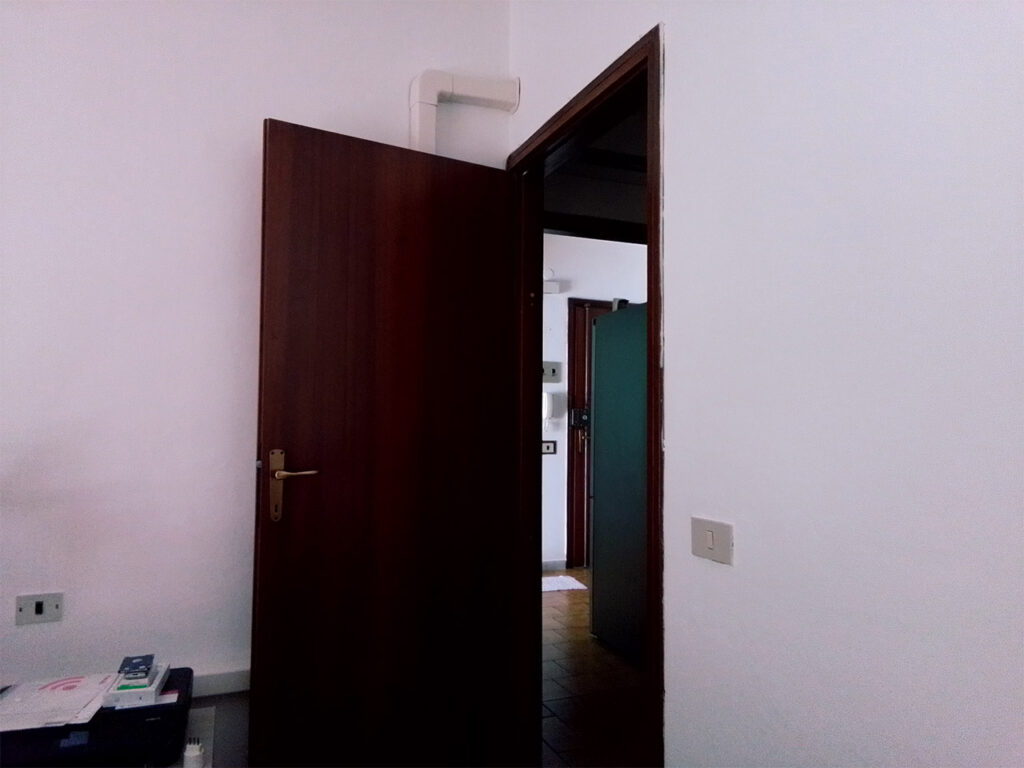
Inside the case, the manufacturer has added a non-removable 5,000 mAh battery which is not really that much for a tablet and to see how well it performs, I decided to run a few videos in a loop until the tablet turned off. It’s important to know that since the display is not very bright by default, I had to push the brightness to 100% all the time to get a properly lit screen and this will punish the battery performance. That being said, while looping the videos, the battery went from 100 to 0 in about 4 hours and a half. I know that the Lenovo Yoga Smart Tab performed far better, but the display looked the same at 50% brightness, so this wasn’t really the best compromise to be made for the manufacturer. The Max10 doesn’t support any quick charging technologies, so it will take a while before it goes from 0 to 100% (best left overnight since it can take more than 5 hours).
Note: While the tablet is left unused, I noticed that there is no battery drain (it remained operational for more than a week).
Conclusion
The affordable tablet market is a bit tricky since the price can be kept low only after the manufacturers have made some significant compromises and I know that most of you would simply go for the Fire HD series and call it a day. But the Dragon Touch Max10 is also a solid choice due to its bloatware-free interface that’s backed by a decently powerful hardware allowing you to play games (with the graphics at low or medium) and open multiple apps without worrying too much about resources. Of course, you have to take into account the landscape layout for the buttons and cameras, the dim display (unless you want to keep the battery at 100%) and all those creaks when holding the tablet in your hand are not really doing justice to the metallic rear panel. Then again, this is a very affordable device and if you can accept its shortcomings, then it’s going to be a suitable tablet for keeping the kids occupied or on long voyages.
Dragon Touch Max10
-Pros
- Decent internal hardware
- Metallic rear panel
- USB Type-C charging port + support for 5GHz band
- Dual-speakers
- Stock Android 9.0
Cons
- The case creaks when you hold it in your hand
- The display is dim and, since it has to be kept at near 100% brightness all the time, it does severely shorten the battery life
- The landscape layout can be a bit weird

